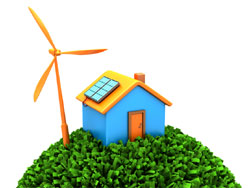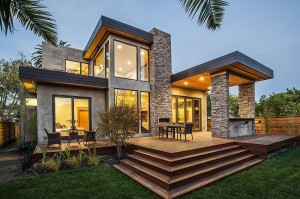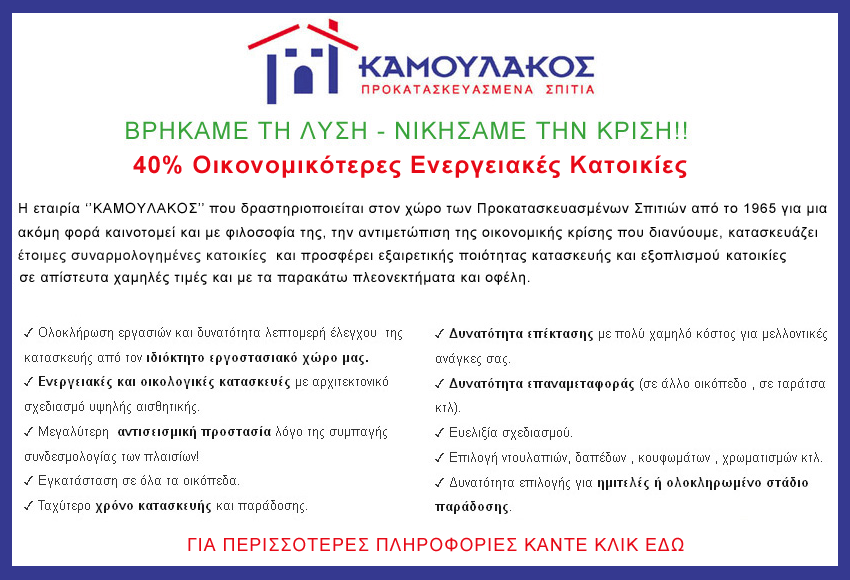Bioclimatic Prefabricated Homes

Sustainable architecture is the design of buildings, taking into account the specific climatic conditions of the place, and utilizing natural resources (sun, vegetation, rainfall, wind, etc.) and other renewable energy sources in order to save energy and reduces environmental impact.
The bioclimatic design is one of the most important factors of eco / green building which aims the construction of buildings designed in order to meet the full energy needs with as less emission of environmentally harmful gaseous pollutants.
The main objectives of bioclimatic design are:
• Ensuring insolation, minimizing heat loss and protection from strong winter winds.
• The sun protection, exploitation of cool winds and the removal of excess heat in the summer.
These objectives can be achieved by following these basic principles of bioclimatic design:
Architecture Structure / Orientation
With the top view of the building and the larger openings oriented to the south maximum solar radiation is ensured which provides solar heat in winter . Also openings, preferably with larger to the south and smaller to the north , offer cross ventilation which provides natural cooling in summer . Proper arrangement of indoor positioning of the main areas of use in the south (living room ) and the secondary in the north ( bedrooms) take advantage of the heating capacity of the sun and ensures a large degree of heating of the interior with minimal consumption of oil or electricity.
Surroundings
Planting trees around the house positively affect the environment and can be used for shading and cooling during the summer months and protection from winter winds.
Basic elements of bioclimatic design are passive systems that use renewable energy sources like the sun and the air to heat or cool a building naturally. They are divided into the following categories:
Passive Solar Heating Systems
• Direct provisions of solar gain: Require the existence of large areas with glass in the south so that the radiation is absorbed by the inner surfaces .
• Indirect provisions of solar gain : Also referred to as solar space it acts as an extension of the indoor space enclosed with glass , so it works as a greenhouse.
• Trombe Wall or Trombe-Michel: a wall facing the sun and are built with materials that can accumulate heat, combined with glass and vacuum. The wall is warmed slowly during the day, then gradually cool during the night emitting heat inside the building.
Passive natural cooling systems

The following ventilation systems help to renew the air and remove excess heat in a building.
• Ventilation Chimneys: The ventilation chimneys are open to the wind direction to collect the cold drafts and direct them indoors building.
• Solar chimney: base their operation on the phenomenon of natural draft. Instead of wall they have a small solar wall (glazed) on the south or southwest side, so with the help of the sun, the inner surface is heated. The hot air is directed to the environment resulting in fresh air cooling the building.
• Cross ventilation: Cross ventilation is the most common, everyday practice for cooling a space. It reequires properly designed vents on the north and south side of the building, or if this is not possible, openings in the east-west axis.
•Shades: The external blinds with movable blinds are the most effective way of shading from solar radiation during the summer months.
Apart from passive systems, an important role in saving energy in a bioclimatic building are also active systems that use mechanical means for heating or cooling buildings, utilizing solar power or natural cooling tanks. In this category are solar panels which provide heating or hot water, heat pumps, photovoltaics, etc.
Consequently bioclimatic design save energy and contribute to the improvement of the global atmosphere without much further increasing the cost of construction.


